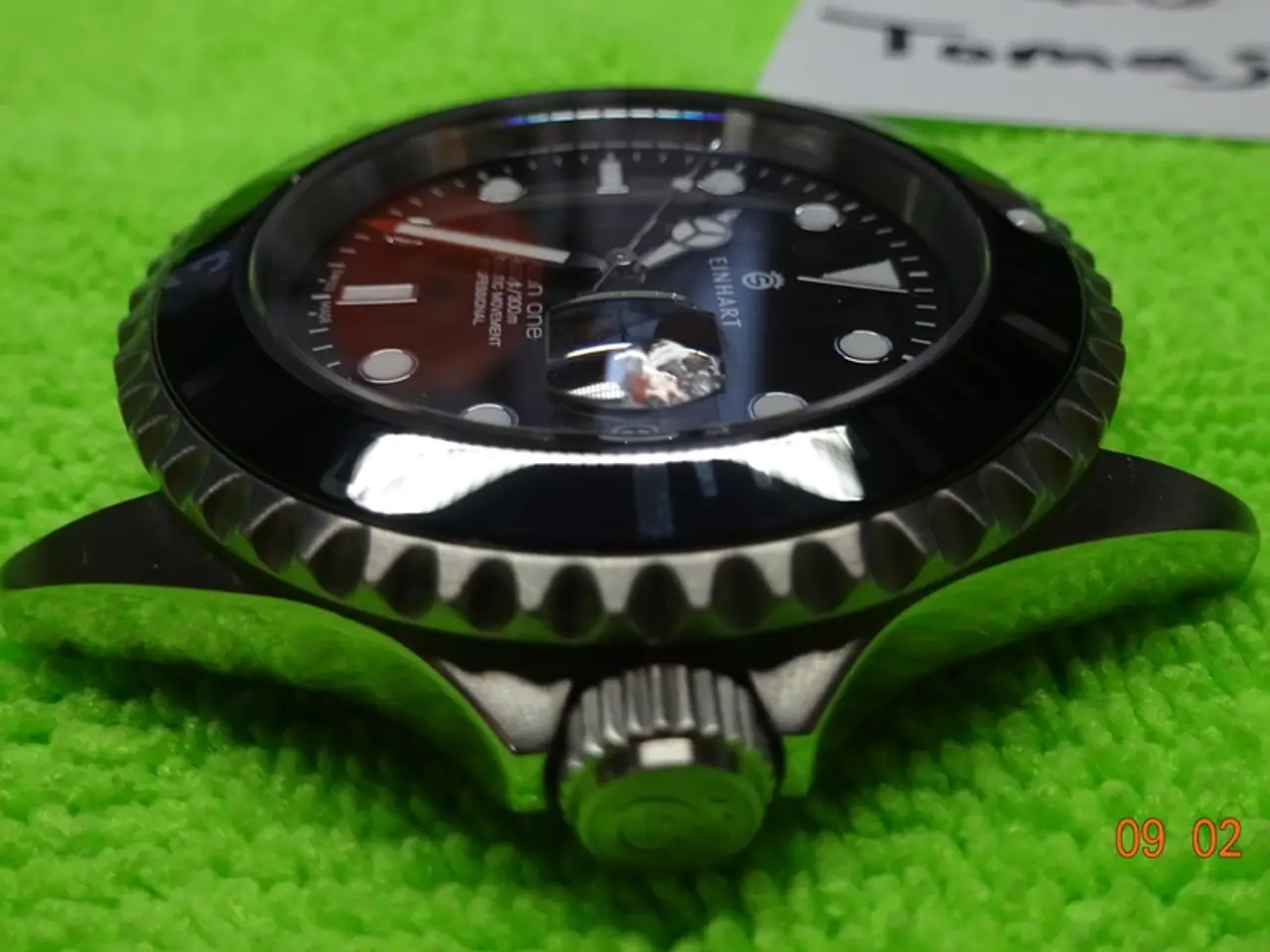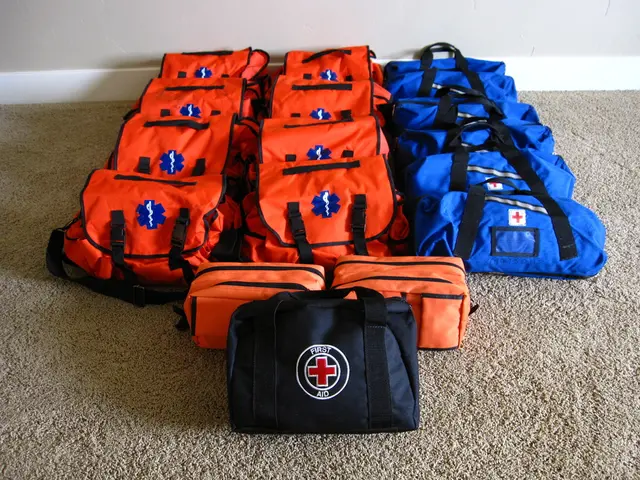Innovative Parkinson's therapies could potentially be fostered through the use of smartwatches.
New research has shown that commercially available devices, such as the Apple Watch, can play a significant role in detecting and measuring early, untreated Parkinson's disease (PD). This groundbreaking development is made possible by leveraging the built-in sensors and camera capabilities of these devices to quantify subtle motor symptoms remotely and continuously [1][2][3][4].
The study, conducted by researchers at the University of Rochester Medical Center's Center for Health + Technology (CHeT), involved participants wearing research-grade sensors, an Apple Watch, and an iPhone during clinic visits and at home for seven days after each visit [2].
One key application of these consumer devices is the use of smartphone-connected devices and apps to record finger-tapping tests or tremor severity remotely. This method, which demonstrates strong compliance and consistency with traditional clinical assessments, facilitates remote symptom monitoring and medical guidance without the need for frequent in-person visits [1][2].
Another approach involves the use of computer vision algorithms on smartphone videos to detect bradykinesia and asymmetries in hand movements indicative of early PD. This method increases sensitivity for early-stage detection by evaluating both hands simultaneously [3].
Commercial smartwatches, equipped with accelerometers and gyroscopes, are also being utilised to capture continuous movement data during both clinical exercises and daily life activities. Studies like the BioClite project use this data to define digital biomarkers reflecting symptom severity and variability, enabling long-term disease tracking in natural environments [4].
Furthermore, FDA-cleared smartphone apps, such as Neu Health’s, measure and monitor tremor, balance, gait, and voice changes remotely, improving clinical decision-making and enabling remote follow-ups [2].
These technologies provide objective, quantitative, and real-time digital biomarkers of Parkinson’s disease motor symptoms, addressing limitations of subjective clinical rating scales, overcoming barriers to frequent specialist visits, and potentially enabling earlier diagnosis and better disease management [1][2][4][5].
The new WATCH-PD study, which recruited 82 individuals with early, untreated Parkinson's and 50 age-matched controls for a 12-month period, further supports this development [6]. The research, published in the journal npj Parkinson's Disease, suggests that these technologies could offer more objective and continuous ways to measure the disease [7].
Notably, the study's first author, Jamie Adams, MD, from the University of Rochester Medical Center, reiterates that digital devices can differentiate between people with and without early Parkinson's and are more sensitive than traditional rating scales for some measures of Parkinson's disease [8].
As Parkinson's disease is the world's fastest growing brain disease, and most of the drugs used to treat it were developed in the last century, these advancements could pave the way for more effective and personalised treatments [9].
The study was funded with support from Biogen, Takeda, and the members of the Critical Path for Parkinson's Consortium 3DT Initiative [10]. Additional co-authors include researchers from the University of Rochester Medical Center, Takeda Pharmaceuticals, Invariant Research Limited, AbbVie Pharmaceuticals, Clinical Ink, Harvard Medical School, and the Bill and Melinda Gates Foundation [11].
In 2015, the medical center neurologist Ray Dorsey, MD, and the CHeT team collaborated with Sage Bionetworks to launch the first smartphone research application, mPower, to monitor Parkinson's disease in real time [12]. Traditional tools used to track Parkinson's disease are subjective and episodic, limiting insight into how the disease affects people's daily lives [13].
With the proliferation of smartwatches and technological improvements, particularly in gyroscopes and accelerometers that can more precisely measure movement, the research potential of these devices continues to grow [14].








